 The 2015 calendar year is quickly approaching its end and, just like we’ve done the last few years, we’d like to take some time to profile some of the most interesting innovations that we here at IPWatchdog came across this past year. Today, we provide our readers with a selection of the top 10 issued U.S. patents we have featured in our coverage, either in our Companies We Follow series or elsewhere.
The 2015 calendar year is quickly approaching its end and, just like we’ve done the last few years, we’d like to take some time to profile some of the most interesting innovations that we here at IPWatchdog came across this past year. Today, we provide our readers with a selection of the top 10 issued U.S. patents we have featured in our coverage, either in our Companies We Follow series or elsewhere.
2015 was a truly remarkable year for innovation and we saw major trends in self-driving cars, wearable technologies, digital wallets and much more. I hope you will enjoy this top 10 listing, which includes innovations for providing water in arid regions, wireless charging systems for electronic devices and even the collection and retransmission of sunlight.
Of course, as with all of these types of lists, the criteria used for inclusion on this list is subjective, based on my own personal preferences. Please feel free to let us know if you saw something particularly noteworthy in 2015.
Happy holidays, and looking forward to seeing the novel inventions that 2016 will bring to the world.
#10: Boeing Develops Water Harvesting System Based on Fuel Cells
 Along with earning honorable mention for its drone innovation, Boeing rounds out our list of the top 10 patents of 2015 with its novel system for harvesting water, detailed within U.S. Patent No. 9088018, issued under the title Water Harvesting System. It protects a water harvesting system including a fuel cell system configured to generate power and fluids, a cooling device which converts materials into water vapor, a collection system collecting the water vapor, a radiator system that transfers heat from the water vapor and an output system directing the water vapor and other fluids from the radiator system. This innovation is designed to produce water for industrial and human consumption in areas of the world where groundwater resources are scarce and rainwater collection schemes cannot provide adequate water supplies.
Along with earning honorable mention for its drone innovation, Boeing rounds out our list of the top 10 patents of 2015 with its novel system for harvesting water, detailed within U.S. Patent No. 9088018, issued under the title Water Harvesting System. It protects a water harvesting system including a fuel cell system configured to generate power and fluids, a cooling device which converts materials into water vapor, a collection system collecting the water vapor, a radiator system that transfers heat from the water vapor and an output system directing the water vapor and other fluids from the radiator system. This innovation is designed to produce water for industrial and human consumption in areas of the world where groundwater resources are scarce and rainwater collection schemes cannot provide adequate water supplies.
#9: Trio of Inventors Pursues IP in Disabling Devices While Driving
 In our coverage of innovations designed to reduce distracted driving this past April, we uncovered a good deal of intellectual property for technologies meant to reduce the risks of driving while distracted or drowsy. For our ninth-place patent of 2015, we wanted to profile an invention developed by a trio of inventors from Georgia and protected by the issue of U.S. Patent No. 8994492, which is titled Disablement of User Device Functionality. It discloses a method for restricting a functionality of user equipment that exists within a particular zone within a vehicle by determining a zone within a driver’s region of interest and analyzing signal transmissions to determine the physical proximity of a user equipment within a particular zone. This invention is designed to overcome the limitations that law enforcement experiences when trying to ensure that drivers are not performing distracting actions, such as texting, while driving. The invention is assigned to three co-inventors: Fariborz M. Farhan of Johns Creek, GA; Babak Firoozbakhsh of Marietta, GA; and Afshin Amini of Alpharetta, GA.
In our coverage of innovations designed to reduce distracted driving this past April, we uncovered a good deal of intellectual property for technologies meant to reduce the risks of driving while distracted or drowsy. For our ninth-place patent of 2015, we wanted to profile an invention developed by a trio of inventors from Georgia and protected by the issue of U.S. Patent No. 8994492, which is titled Disablement of User Device Functionality. It discloses a method for restricting a functionality of user equipment that exists within a particular zone within a vehicle by determining a zone within a driver’s region of interest and analyzing signal transmissions to determine the physical proximity of a user equipment within a particular zone. This invention is designed to overcome the limitations that law enforcement experiences when trying to ensure that drivers are not performing distracting actions, such as texting, while driving. The invention is assigned to three co-inventors: Fariborz M. Farhan of Johns Creek, GA; Babak Firoozbakhsh of Marietta, GA; and Afshin Amini of Alpharetta, GA.
#8: Disney’s System for Robotic Mimicking of Human Action
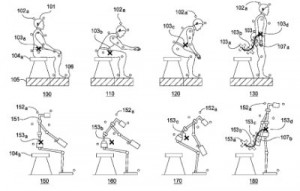 This has been an interesting year in robotics as well and we’ve seen some truly astounding innovations like the animal robotics developed by Boston Dynamics, which showcased incredible speed and stability. Stability in humanoid robotics is the focal point of our eighth-place patent issued to the Walt Disney Company (NYSE:DIS), which is U.S. Patent No. 9162720, entitled Robot Action Based on Human Demonstration. It claims a method for reproducing a designated action of a human with a robot which involves receiving image capture data and contact force data obtained from a human performing an action, approximating a center of mass trajectory of the human action and generating a planned robot action for emulating the human action. This innovation addresses issues in replicating human actions by robots because of differences in dynamic and kinematic properties which typically causes robots to improperly perform a sit-to-stand action.
This has been an interesting year in robotics as well and we’ve seen some truly astounding innovations like the animal robotics developed by Boston Dynamics, which showcased incredible speed and stability. Stability in humanoid robotics is the focal point of our eighth-place patent issued to the Walt Disney Company (NYSE:DIS), which is U.S. Patent No. 9162720, entitled Robot Action Based on Human Demonstration. It claims a method for reproducing a designated action of a human with a robot which involves receiving image capture data and contact force data obtained from a human performing an action, approximating a center of mass trajectory of the human action and generating a planned robot action for emulating the human action. This innovation addresses issues in replicating human actions by robots because of differences in dynamic and kinematic properties which typically causes robots to improperly perform a sit-to-stand action.
#7: IBM’s Fact Checking System for Newsrooms Could Impact News Employment
 IBM (NYSE:IBM) has been making news headlines for its natural language processing systems such as Watson, which has recently been establishing a presence in medicine with the IBM Watson Health platform. The tech developer is also applying similar innovation in the field of news publishing as is evidenced by our seventh-placed patent for 2015, U.S. Patent No. 8972321, which is titled Fact Checking Using and Aiding Probabilistic Question Answering. It discloses a method for verifying a statement by decomposing a statement into sets of question and answer pairs, determining confidence values for each pair set and combining confidence values to represent a probability that a received statement is correct. This innovation is designed to overcome errors in fact checking which can occur when such checking is performed manually. It also proves the widely disruptive nature of computing technologies as this program could very likely reduce the number of newsroom employees required to proofread articles prior to publication.
IBM (NYSE:IBM) has been making news headlines for its natural language processing systems such as Watson, which has recently been establishing a presence in medicine with the IBM Watson Health platform. The tech developer is also applying similar innovation in the field of news publishing as is evidenced by our seventh-placed patent for 2015, U.S. Patent No. 8972321, which is titled Fact Checking Using and Aiding Probabilistic Question Answering. It discloses a method for verifying a statement by decomposing a statement into sets of question and answer pairs, determining confidence values for each pair set and combining confidence values to represent a probability that a received statement is correct. This innovation is designed to overcome errors in fact checking which can occur when such checking is performed manually. It also proves the widely disruptive nature of computing technologies as this program could very likely reduce the number of newsroom employees required to proofread articles prior to publication.
#6: Qualcomm’s Wireless Charging Scheme for Electronic Devices
Systems for providing power wirelessly through inductive charging techniques has also sprung up from time to time this year on our blog. We’ve even witnessed a technological trend towards the wireless charging of electric vehicles properly parked above an induction coil. Qualcomm, Inc. (NASDAQ:QCOM) holds sixth-place in this patent countdown with U.S. Patent No. 9130602, entitled Method and Apparatus for Delivering Energy to an Electrical or Electronic Device Via a Wireless Link. It discloses an apparatus for providing power to a device with a transmitting antenna operative to power a device by a wireless link and a control unit controlling the direction of the wireless power transmission. The wireless power transmission scheme enables the charging of devices throughout an interior space, like lamps and other electrical appliances, without requiring the use of wires that can ruin aesthetics or cause walking hazards.
#5: Intel’s Autonomous Driving Tech Highlights This Year’s Self-Driving Tech Trend
Self-driving vehicular technologies have been grabbing the world’s attention at least since this past CES where they took center stage. Of particular interest is how the trend has involved tech sector players like Google and others and not just traditional automakers like GM, Ford or Toyota. Intel Corporation (NASDAQ:INTC) is another high-tech developer joining the fray thanks to the issue of patents like U.S. Patent No. 9134731, titled Locality Adapted Computerized Assisted or Autonomous Driving of Vehicles. The patent protects an apparatus with a policy generator operable to generate locality specific policies for driving a vehicle within a locality. This particular innovation is aimed at the deployment of autonomous vehicles in developing countries with poor road infrastructures, reducing the risk of operating a vehicle on unsafe roads or in areas with a high percentage of crime.
#4: Google’s Emergency Medical Response Drone
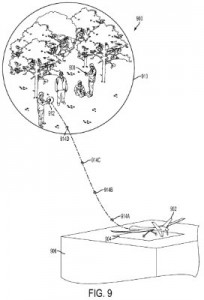 Unmanned aerial vehicles (UAVs), more commonly known as drones, were big in our headlines this year through last January’s Consumer Electronics Show (CES) to Congressional regulatory hearings. Their use has been considered for an array of applications including the emergency response system developed by Google, now Alphabet Inc. (NASDAQ:GOOG) and protected by the issue of U.S. Patent No. 8930044, titled Multi-Part Navigation Process by an Unmanned Aerial Vehicle for Navigating to a Medical Situation. It discloses a UAV with multiple navigation processes generating flight-control signals for navigating the UAV towards a medical situation. This UAV could carry medication or defibrillation equipment to a person experiencing a medical emergency. Honorary mention for drone innovations in 2015 go to the Boeing Company (NYSE:BA) for its UAV innovation protected by U.S. Patent No. 9117185, entitled Forestry Management System.
Unmanned aerial vehicles (UAVs), more commonly known as drones, were big in our headlines this year through last January’s Consumer Electronics Show (CES) to Congressional regulatory hearings. Their use has been considered for an array of applications including the emergency response system developed by Google, now Alphabet Inc. (NASDAQ:GOOG) and protected by the issue of U.S. Patent No. 8930044, titled Multi-Part Navigation Process by an Unmanned Aerial Vehicle for Navigating to a Medical Situation. It discloses a UAV with multiple navigation processes generating flight-control signals for navigating the UAV towards a medical situation. This UAV could carry medication or defibrillation equipment to a person experiencing a medical emergency. Honorary mention for drone innovations in 2015 go to the Boeing Company (NYSE:BA) for its UAV innovation protected by U.S. Patent No. 9117185, entitled Forestry Management System.
#3: Amazon’s On-Demand 3D Printing System for Quick Response to Internet Sales
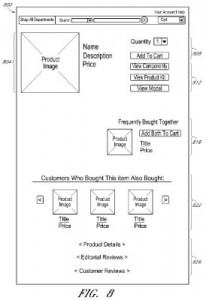 E-commerce is making a huge impact on the conventional business model for retail and Amazon.com Inc. (NASDAQ:AMZN) is leading the charge in that sector. It’s stranglehold on retail is so powerful, it hired the largest number of seasonal employees this year of any corporation, closely followed by shipping company UPS, another indication of the strength of e-commerce. In the most recent Black Friday holiday, Amazon’s website took in more than one-third of all online sales on that day and it’s top sellers were its own products like the Amazon Echo speakers or the Fire TV streaming stick.
E-commerce is making a huge impact on the conventional business model for retail and Amazon.com Inc. (NASDAQ:AMZN) is leading the charge in that sector. It’s stranglehold on retail is so powerful, it hired the largest number of seasonal employees this year of any corporation, closely followed by shipping company UPS, another indication of the strength of e-commerce. In the most recent Black Friday holiday, Amazon’s website took in more than one-third of all online sales on that day and it’s top sellers were its own products like the Amazon Echo speakers or the Fire TV streaming stick.
Given this crushing lead in Internet retail, the fact that Amazon is improving its ability to manufacture items on-demand when a sale is made speaks volumes about the company’s current goals. Our third-place patent for 2015 is U.S. Patent No. 9159106, titled Systems and Methods for Fabricating Products On Demand. It claims a method of fabricating a product on demand by receiving a manufacturable model for a product to be fabricated by a three-dimensional printer and fabricating the product for delivery upon request by a consumer. The innovation also enables some editing of manufacturable models so that products can be customized to an individual customer’s preference.
#2: Bank of America’s Mobile Banking Platform Underscores Digital Wallet Trends
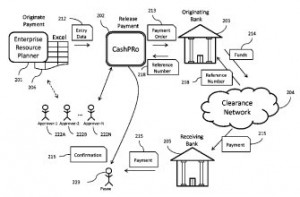 Sometimes, an invention makes the top ten list not so much for its novelty but sometimes for what it represents in the world of technology. Digital wallets and mobile payment services have been a major topic of discussion this year on our blog. Our choice for second-place in our top patent survey for 2015 is Bank of America’s U.S. Patent No. 8914308, titled Method and Apparatus for Initiating a Transaction on a Mobile Device. It protects a method for displaying the initiation of a transaction on a mobile device involving the selection of a template converted into a reviewable transaction enabling payment of funds to a trusted receiver. The innovation was pursued because of a lack at that time of financial services designed for smartphones and tablets.
Sometimes, an invention makes the top ten list not so much for its novelty but sometimes for what it represents in the world of technology. Digital wallets and mobile payment services have been a major topic of discussion this year on our blog. Our choice for second-place in our top patent survey for 2015 is Bank of America’s U.S. Patent No. 8914308, titled Method and Apparatus for Initiating a Transaction on a Mobile Device. It protects a method for displaying the initiation of a transaction on a mobile device involving the selection of a template converted into a reviewable transaction enabling payment of funds to a trusted receiver. The innovation was pursued because of a lack at that time of financial services designed for smartphones and tablets.
Mobile pay has been a huge area of innovation to spotlight this year, not just because of the activities of Apple, Google and Samsung in this field but also because recent U.S. Supreme Court decisions. Financial services implemented in software were the focus of Alice Corp. v. CLS Bank, which was decided last year. As a result of that decision, much of software, and especially financial services, are now held to be abstract ideas that are unpatentable as subject matter, failing the basic test of Section 101. What’s different about Bank of America’s patent here? Shouldn’t it be unpatentable because you could just drive to the bank yourself to deposit a check? Obviously, we think software like this should be patentable, but it does point out some of the absurdities present in SCOTUS’s decision.
#1: Astrium’s Satellite for Retransmitting Sunlight to Earth for Growing Crops
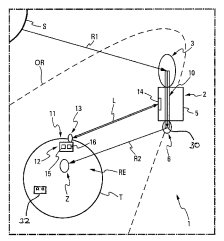 Perhaps this is in the forefront of our minds here at IPWatchdog because we explored this invention recently in our coverage of novel Airbus technologies, many of which were pretty astounding in terms of air travel. However, there can be no doubt that perhaps the most attention-grabbing technologies patented this year is U.S. Patent No. 9180980, which is titled System in Space for Reinforcing Photosynthesis and Method. Issued to Astrium SAS, a Paris-based subsidiary of Airbus Group SE (EPA:AIR). It claims a method for reinforcing photosynthesis on Earth using a retransmitting satellite orbiting the earth and having multiple elements for collecting sunlight and retransmitting it towards Earth to reinforce photosynthesis and crop growth.
Perhaps this is in the forefront of our minds here at IPWatchdog because we explored this invention recently in our coverage of novel Airbus technologies, many of which were pretty astounding in terms of air travel. However, there can be no doubt that perhaps the most attention-grabbing technologies patented this year is U.S. Patent No. 9180980, which is titled System in Space for Reinforcing Photosynthesis and Method. Issued to Astrium SAS, a Paris-based subsidiary of Airbus Group SE (EPA:AIR). It claims a method for reinforcing photosynthesis on Earth using a retransmitting satellite orbiting the earth and having multiple elements for collecting sunlight and retransmitting it towards Earth to reinforce photosynthesis and crop growth.
Solar energy collection isn’t a new idea; it’s the basis of solar panel technology which we’ve had with us for decades. But using a satellite to collect sunlight in space, and then the ability to retransmit that sunlight to a specific area of Earth, sounds nothing short of mind-blowing. Especially when that sunlight could light up an area measuring tens of square kilometers. It’s a completely novel technique when you compare the transmission of collected light to proposed light-reflecting satellites, which would require a large mirror requiring a powerful propulsion system. This invention seems like a perfect example of the incredible ability that human beings have shown over the centuries in adapting what has been naturally provided to the world into a more productive system.

![[IPWatchdog Logo]](https://ipwatchdog.com/wp-content/themes/IPWatchdog%20-%202023/assets/images/temp/logo-small@2x.png)

![[Advertisement]](https://ipwatchdog.com/wp-content/uploads/2024/04/Patent-Litigation-Masters-2024-sidebar-early-bird-ends-Apr-21-last-chance-700x500-1.jpg)

![[Advertisement]](https://ipwatchdog.com/wp-content/uploads/2021/12/WEBINAR-336-x-280-px.png)
![[Advertisement]](https://ipwatchdog.com/wp-content/uploads/2021/12/2021-Patent-Practice-on-Demand-recorded-Feb-2021-336-x-280.jpg)
![[Advertisement]](https://ipwatchdog.com/wp-content/uploads/2021/12/Ad-4-The-Invent-Patent-System™.png)







Join the Discussion
5 comments so far.
Nilda Santiago
January 7, 2016 11:35 pmSo proud of my husband and his team.om getting #2 Mobile banking platform. His idea and his team executed. His name is on that patten so Congratulations to him and his team.
Night Writer
December 30, 2015 11:09 pmPretty cool Steve. Such a great idea to resurrect following the technology progress in new patents.
Gene Quinn
December 29, 2015 10:07 amVictor-
Steve wrote the article and his assignment was to use his own subjective criteria. He is the primary author of our Companies We Follow series, so he goes through patents and patent applications monthly looking for interesting things to write about. The list is really intended to do a few things. First, spark a discussion. Two, identify some interesting innovations and trends. As you see from the list there are a couple patents that are there because of the class of innovation they represent more than anything. For example, Bank of America and digital wallets and Intel and autonomous driving. Those were two big areas of innovation this year with numerous players from within the financial and auto industry filing and getting patents as well as other giant corporations outside those respective industries. There is a lot of interest in those fields.
-Gene
Victor Suarez Rovere
December 29, 2015 09:54 amNice inventions, but which criteria do you use for the selection? Which patent was 11th and why?
Benny
December 29, 2015 06:45 amRegarding the ‘980 patent – this is not novel. Look up the Znamya satellite, for example, which predated this patent by about 20 years. It is also unenforcable – since in order to infringe the claims, you have to be in space, and US patents are only enforceable in the US.